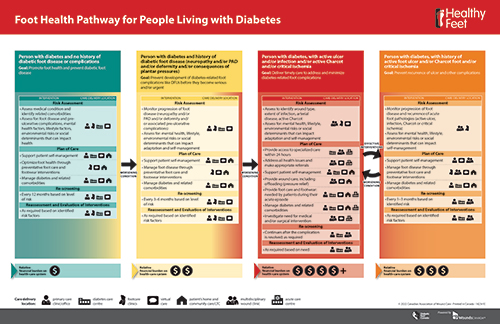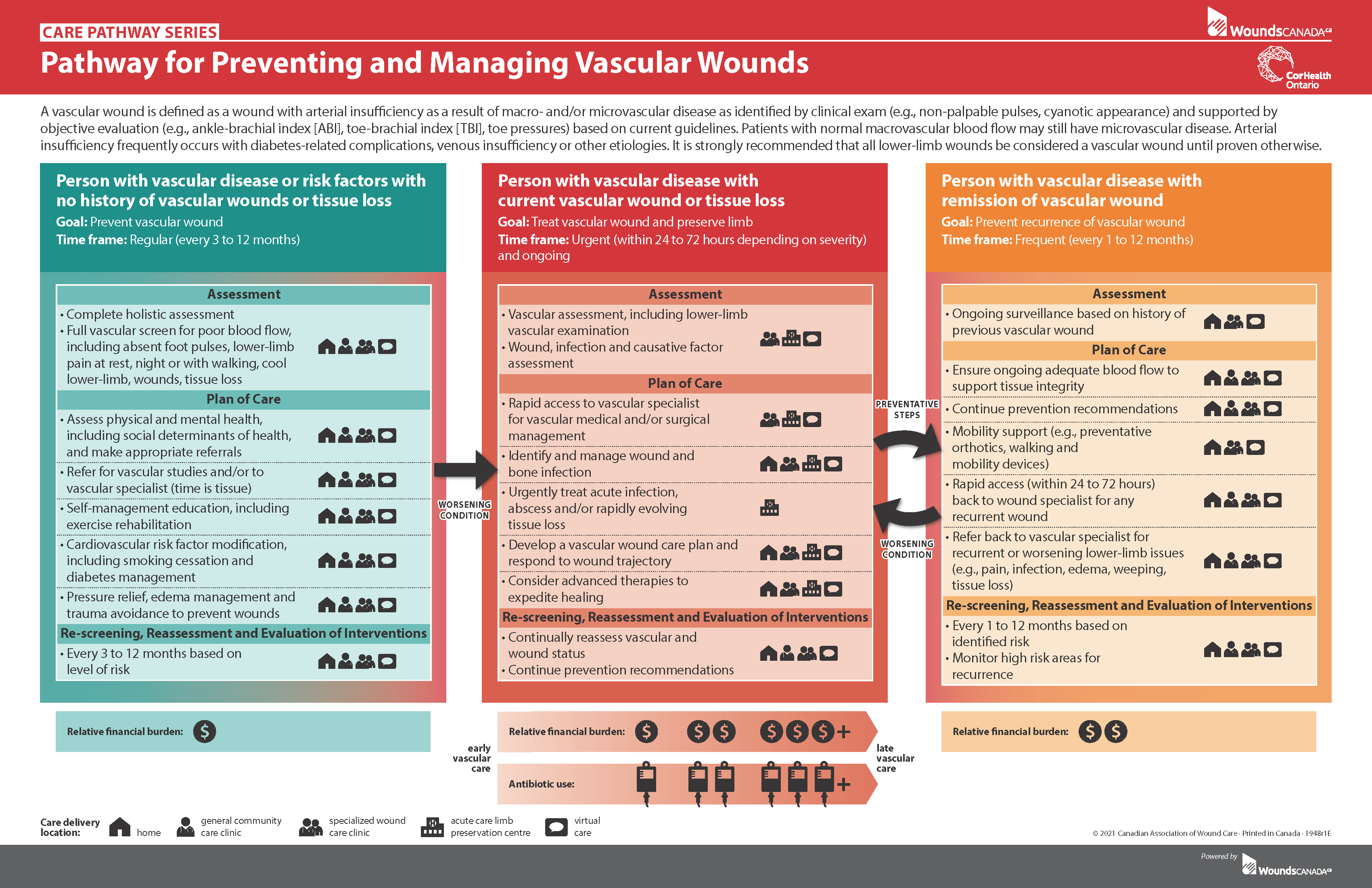Care Pathway
The care pathways developed by Wounds Canada outline a risk-based approach that focuses on patient outcomes, experiences and value-based care consistent with population health principles. The aim of this approach is to support skin and general health by focusing on early interventions that prevent wounds and/or wound-related complications.
The pathways consist of either three or four domains, each organized to assist in identifying an individual’s specific risk and then recommend an appropriate care plan, using a holistic approach, complete with follow-up requirements. The green domain identifies interventions for patients at no or very low risk, yellow for patients at low risk, red for patients experiencing an acute wound-related episode, and orange for patients who are at a post-acute episode stage, such as those living with a healed wound that may be at risk for recurrence.
While based on international best practice standards, these pathways can be adapted to fit the needs and resources of any health jurisdiction, provided the general principles are met. As a tool for communicating to individuals, families, health providers, administrators, policy makers and funders, the pathways highlight the importance of risk screening and secondary and tertiary prevention using an integrated team approach that promotes skin health and prevents wounds and wound complications, including infections, slow or non-healing wounds, amputations, disability and death
Care Pathway Series
Pathway for Preventing and Managing Diabetic Foot Complications
In 2019, a group of staholders from across Canada formed the Diabetic Foot Canada Task Force to address the deficit in awareness, knowledge and funding related to preventing and managing diabetic foot complications. The Diabetic Foot Canada Task Force identified multiple barriers to the implementation of effective diabetic foot care across Canada and agreed to develop an infographic representing a pathway for managing diabetic foot complications. The infographic outlines the most important aspects of care and presents them in a way that is understandable to all members of Canadian society, whether or not they have a health-care background.
Download the Pathway:
4-page Pathway for Preventing and Managing Diabetic Foot Complications (English)
1-page Foot Health Pathway for People Living with Diabetes (English)
 .
.
Read more about the development of the Pathway: www.woundscanada.ca/docman/public/limb-preservation-in-canada/2019-vol-1-no-1/1531-lpc-summer-2019-v1n1-final-p-55-61-df-inforgraphic/file
Pathway for Preventing and Managing Vascular Wounds
In 2020, to increase awareness of vascular wounds and as the foundation for a provincial Lower-Limb Preservation Strategy, Ontario Health - CorHealth Ontario’s[SL1] Lower-Limb Preservation Advisory Committee collaborated with Wounds Canada to develop a practical system-level Pathway for Preventing and Managing Vascular Wounds. The pathway highlights the key care activities for vascular wound prevention and management in a practical one-page infographic. It emphasizes the importance of regular screening, early identification, timely assessment and best-practice treatment of a vascular wound (time is tissue). Additionally, it includes the definition of a vascular wound and highlights the importance that every lower-limb wound should be considered a vascular wound until proven otherwise. The pathway provides a roadmap for use by lower-limb preservation organizations, administrators and champions to provide guidance to optimize the delivery of best-practice vascular wound care, reduce health care costs and increase positive patient outcomes including reducing avoidable major lower-limb amputations.
Download the Pathway:
1-page Pathway for Preventing and Managing Vascular Wounds

